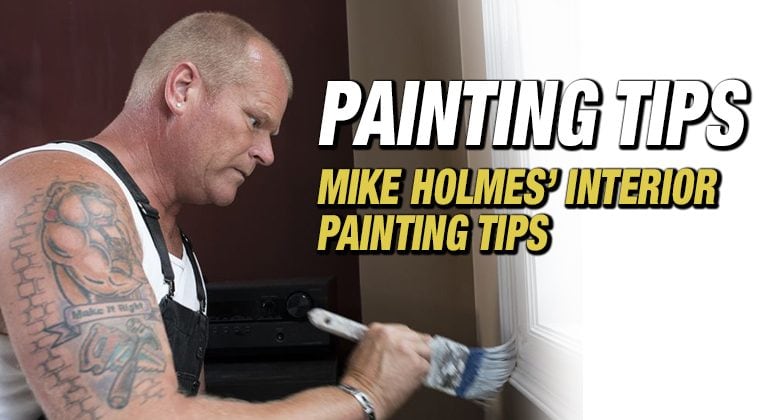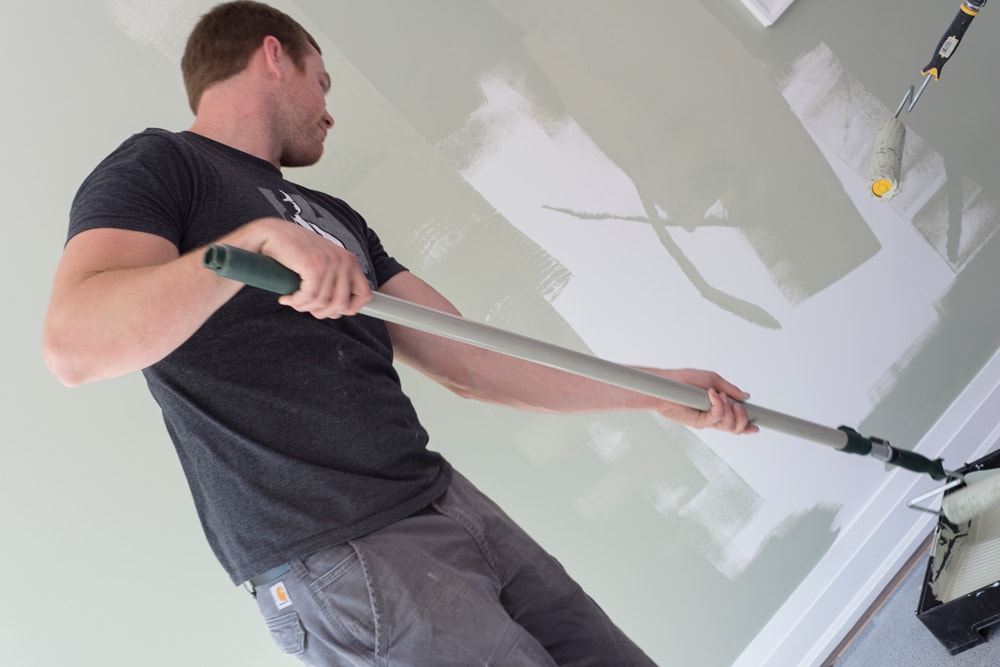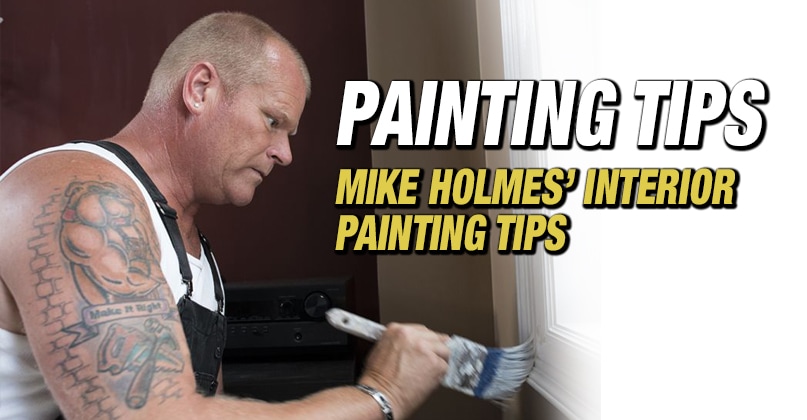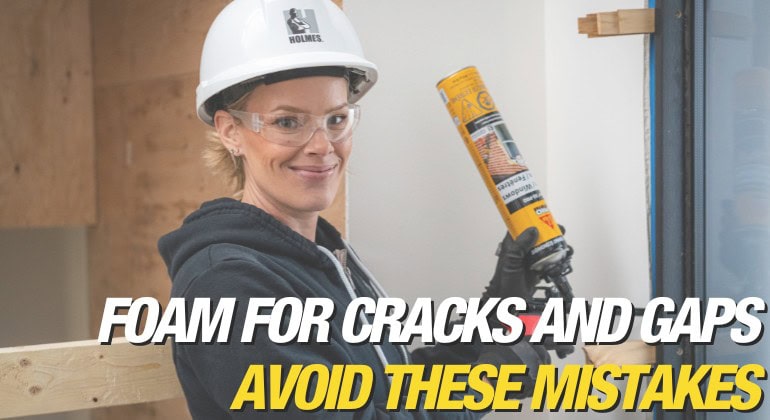Dream of a career where your skills bring joy, enable freedom, and create unforgettable memories? The thriving recreational vehicle (RV) industry offers just that! It’s more than fixing vehicles; it’s...

Mike Holmes’ Interior Painting Tips
By Mike Holmes
Mike’s Advice / Home Renovation
Friday, April 3rd, 2020 @ 12:01pm
To me, painting the interior rooms of your home is the ideal DIY job for any homeowner, especially those who are just starting to flex their DIY muscles. Painting is a job that’s purely cosmetic, meaning, if there are any screwups along the way, you haven’t messed up the structure of your home.
You may have to live with some tacky looking walls for a little while, but believe me, that’s a lot better than messing with the plumbing or electrical and compromising the integrity of your home.
RELATED
If you’re looking to get started with a painting project, here are my interior painting tips.
Is there a cheap way I can increase the value of my house?
If you’re planning to sell your home in the near future, a fresh coat of paint can really motivate buyers into making an offer. Not only can it brighten up the home, using a few clever painting tricks, can make a smaller room feel much larger. Choosing lighter pastel tones, and painting the trim and walls with the same paint colour can create an illusion of a larger space.
The reverse is true too – with a larger room that you want to make look cosier, choose a darker paint colour.
Of course, if you’re a motivated seller, choosing neutral colours may be the best option because it allows any potential buyer to imagine just about any use possible for the room.
Generally, when you strategically paint the inside of your home, you will see a return on your investment. So what rooms should you prioritize? Start with kitchens, bathrooms, and entryways.
Want to learn of other ways to increase the value of your home? check our 11 Easy Renovations To Increase The Value of your Home Article
How to calculate how much it will cost to paint a room?
First you’ll need to figure out the size of your room to determine your needs. Typically, per 400 sq/ft you’ll need about 4 litres of paint. The cost and quality of the paint you select will vary – but this is a good baseline.
Tip: Use an online paint calculator to figure out how much paint you’ll need to cover a room, like this one here.
Once you’ve made your paint selections and measured your room, you can come up with a good estimate for the cost to cover the walls. Don’t forget to include the other tools in your budget!
What’s the most efficient way to paint an interior room?
First things first, clear the room of as much furniture as possible. This is especially true if you’re painting the ceiling.
Start by running a damp cloth over the baseboards to get rid of any dust that’s gathered. If you’re not painting the baseboards, trim, and ceiling, take this opportunity to create a divider using your painting tape, so you don’t drip and paint where you don’t want it to be. Don’t forget to tape over your outlet covers.
Do you need to wash the wall before you paint? Normally, no, but there are a few exceptions. In rooms like kitchens that can see a lot of grease build-up, it’s a good idea.
If you live in a smoking home, you’ll want to give them a wash before painting. Otherwise, you should be fine to skip that step.
You’ll want to fill any nail holes or other wear and tear with a filling compound to ensure the wall remains nice and consistent throughout. Start by sanding the area, apply your filling compound, then sand it again once it’s dry.
The key to making paint stick is to actually make the wall a little bit rough and uneven. You could sand the entire wall, but that will take forever. Instead, this is when you’d apply a coat of primer to the surface, to help the paint adhere.
What are the expert’s painting techniques?
Start by painting around the edges of your ceiling and baseboards. If you didn’t apply tape like I suggested, I hope you’ve got a steady hand. Have a rag on hand to immediately wipe up any droplets or mistakes.
Once you’ve gone around the edges, pull out your paint tray and roller. Apply paint from top to bottom. Once that paint starts to dry, leave it alone! By adding more, you could wind up with a streaky wall.
When the entire wall is dry, reassess if you need another coat and repeat as necessary.
Should you paint the walls or the trim first?
Here’s the order the pros tend to follow when it comes to painting a full room. Start with the baseboards and trim, then do the ceiling, then do the walls last.
Typically, it’s just easier to start with the smaller details first. Once that’s finished, you properly tape them off to protect them when you tackle the larger part of the project.

You could start by painting the walls first, but believe me, it’s a lot harder to tape off the walls than it is the trim.
What’s the best way to paint a ceiling?
Ensure the room is empty, and that you’ve got a drop cloth to cover the floor. Ceiling paint has a habit of leaving the occasional drip on the floor, so make sure you’re covered.
Remove the ceiling fixtures. If that’s not possible, bag them up to prevent drips.
Start by using your paintbrush to paint along with the corners where the wall meets the ceiling. This helps ensure that you’ve got all the edges painted properly, and when you start using the roller, it will help the paint blend more naturally.
You’ll want to tackle the ceiling in a grid-like formation of about 5 square feet at a time. This keeps the edge of the grid wet, so you can easily track your progress.
Once you’ve moved through the entire grid, assess if you need another coat.
WANT MORE TIPS?
Check out the episode below of Holmes @ Home to learn more!
What should I look for when hiring a painting contractor?
After all this, does it sound like you might prefer to hire a pro to paint your walls instead of doing it yourself? Listen, I don’t blame you – and I do believe if you have the ability to hire an expert to do things right the first time, you should.
So what’s the best way to find the pro who’s going to do it right? There are a few easy to follow steps:
- Ask your friends and family for word of mouth recommendations – for good contractors word of mouth is the best advertising
- Do a search online – look carefully at their online reviews
- Call a few contractors and ask them things like how long they’ve been in business, how busy they are, etc.
- Ask for references from past clients (I like to ask for 10 or so)
- CALL THOSE REFERENCES – it amazes me how many people skip this step. It’s about getting a good picture of what working with the contractor is like.
RELATED
There’s more to painting than simply buying a few cans of paint, some rollers, and inviting your friends over for pizza. Make sure you’re fully equipped to do it the right way. If you mess up, it’s only cosmetic, but you should have all the tools t todo it right.
READ NEXT








